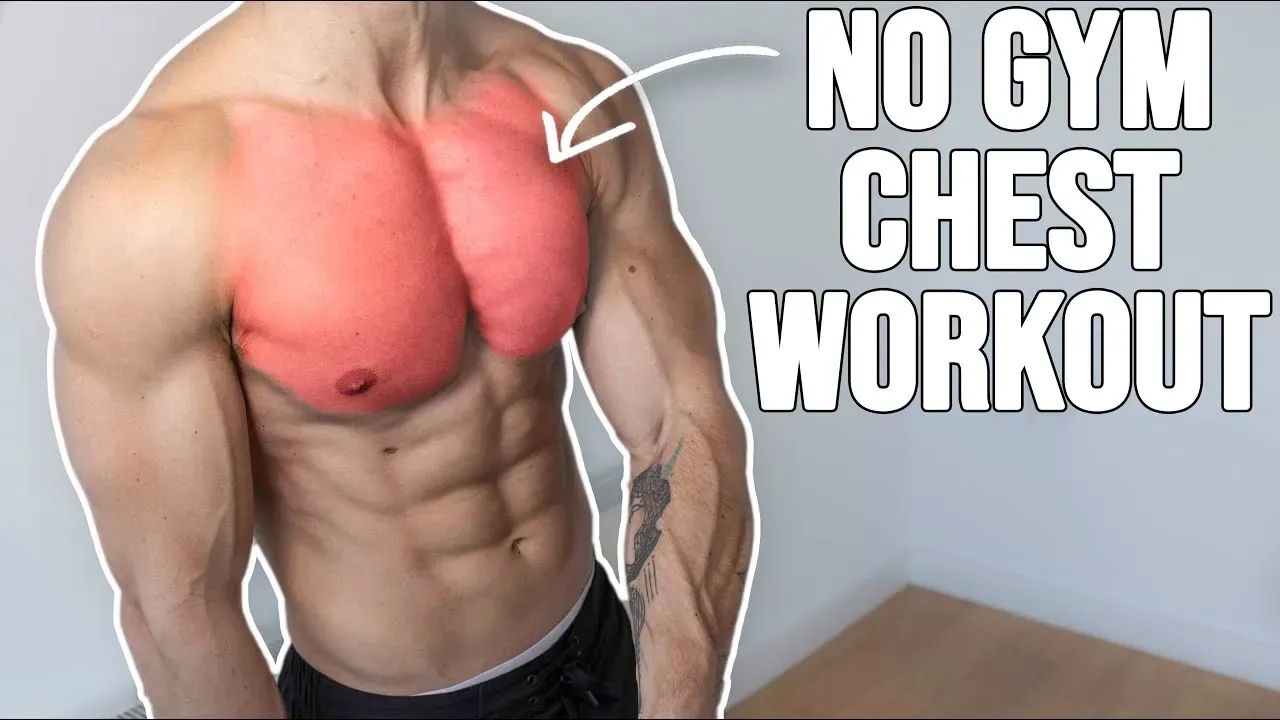Table of Contents
Let's be real. Not everyone has a gym membership, a fancy home setup with racks and benches, or even a pair of dumbbells collecting dust in the corner. Maybe you're short on time, traveling, or just prefer the comfort (and judgment-free zone) of your own space. Whatever the reason, if building a stronger, more defined chest feels impossible without iron, you've been lied to.
Why Bodyweight Works For Your Chest
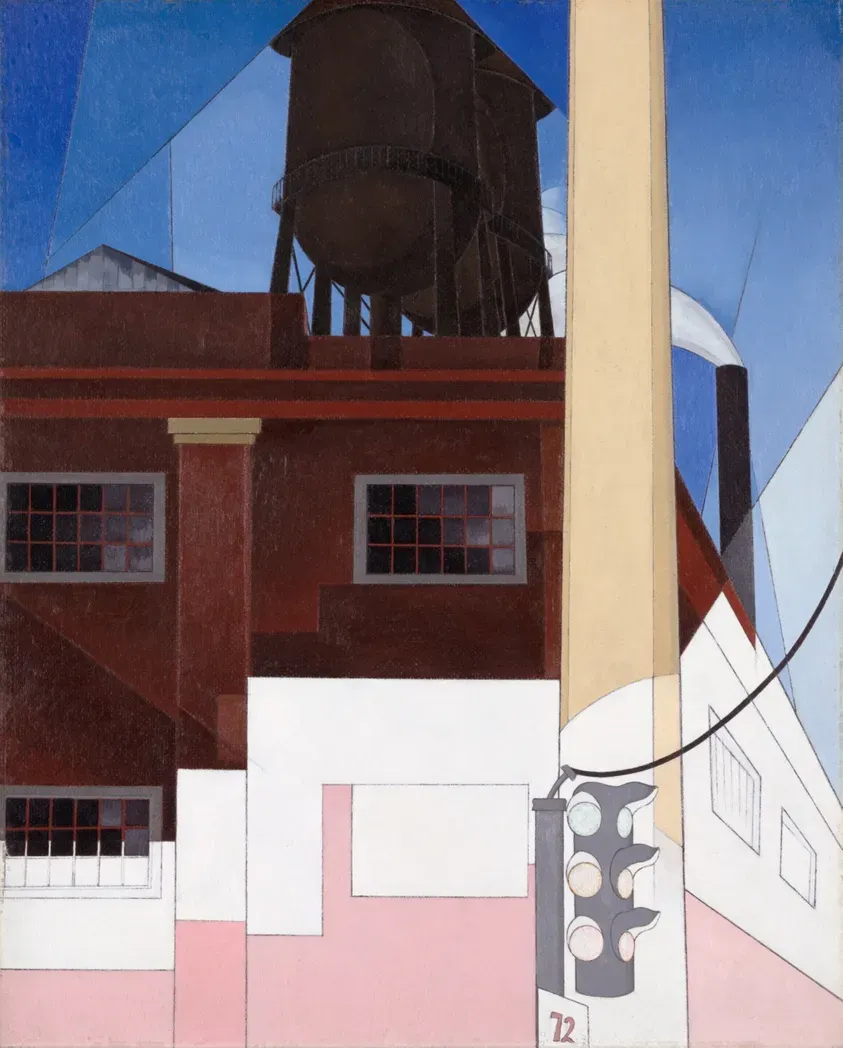
Why Bodyweight Works For Your Chest
It's About Resistance, Not Just Weight
Look, when most people think chest day, they picture a bench press loaded with plates. They assume you need external weight to build muscle. But muscle growth happens when you challenge the fibers with resistance that forces them to adapt. Your body provides plenty of resistance! Think about a standard push-up. You're lifting a significant portion of your body weight against gravity. For many beginners, and even intermediate folks, that's more than enough load to stimulate growth in your chest, shoulders, and triceps. It’s not about the number on a dumbbell; it’s about the tension you create in the muscle.
Engaging More Than Just the Pecs
One cool thing about bodyweight chest workouts at home no equipment needed is how they force your body to work as a unit. Unlike lying flat on a bench where a lot of stabilizing is taken care of, a push-up requires your core, glutes, and even your legs to stay tight and maintain a rigid plank position. This full-body tension isn't just for show; it transfers force efficiently and builds functional strength that carries over to other movements. You get chest work, yes, but you also get a stability boost you might miss with isolated machine exercises.
Benefits of Bodyweight Training
- Builds relative strength (strength compared to your body weight).
- Improves core stability and overall body control.
- Requires minimal to no equipment, making it accessible anywhere.
- Reduces impact on joints compared to heavy lifting.
- Increases body awareness and proprioception.
Progressive Overload is Still King
so you might be thinking, "What happens when push-ups get easy?" That's where the magic of variations comes in. You don't just keep doing more of the same. You change the angle, the leverage, the tempo, or even the number of limbs supporting you. Elevating your feet makes it harder (targeting the upper chest more), widening your grip hits the outer pec differently, and explosive push-ups build power. This constant ability to tweak and increase the challenge means you can keep making progress, building strength and size in your chest without ever touching a barbell. It's about getting creative with your body.
Mastering PushUp Variations for Chest Workouts at Home
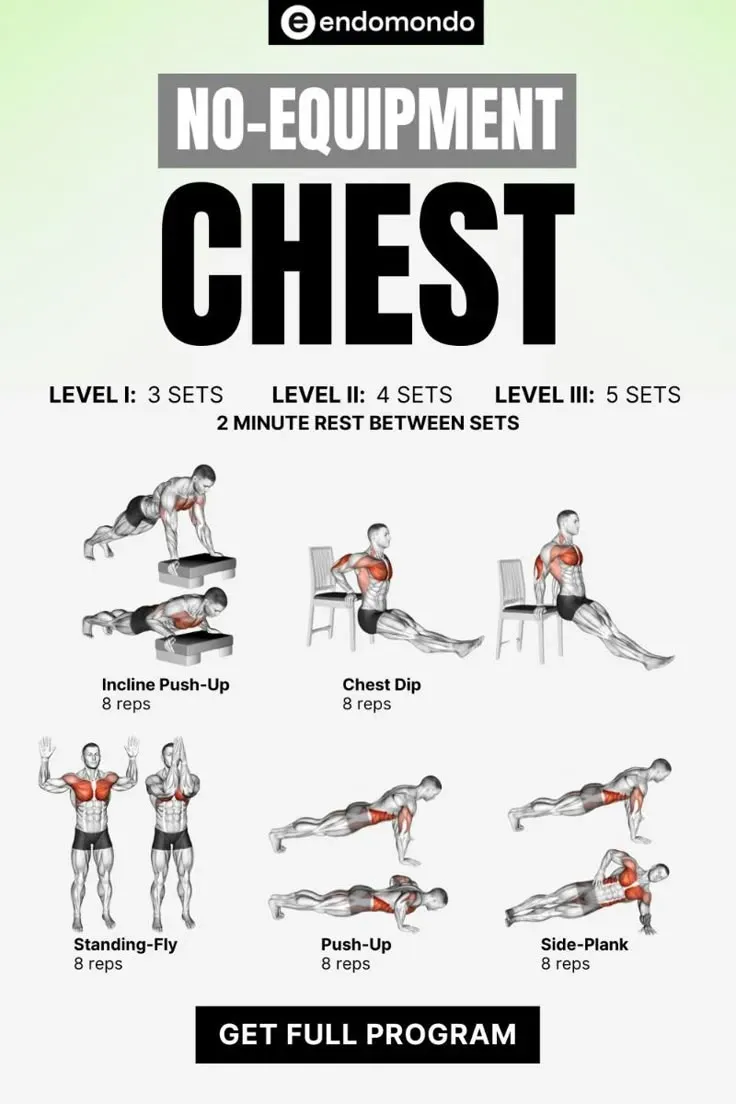
Mastering PushUp Variations for Chest Workouts at Home
Beyond the Basic Push-Up
Alright, so you can crank out a few standard push-ups without your face hitting the floor. Great start. But if you think that's all there is to chest workouts at home no equipment, you're missing the whole picture. The beauty of bodyweight training lies in manipulation. By simply changing your hand position, foot elevation, or tempo, you shift the angle of resistance and force different parts of your chest to pick up the slack. It's like having a whole rack of dumbbells, but instead of picking up different weights, you're just moving your body around. This strategic variation is how you keep challenging your muscles once the basic movement gets too easy.
Targeting Your Pecs from Every Angle
Think of your chest muscles (your pectorals) as having different fibers that run in slightly different directions. Standard push-ups hit the middle pretty well. But what about that often-neglected upper chest or the sharp line of the lower pec? Elevating your feet on a chair or bench puts your body in a decline position, hammering those lower chest fibers. Conversely, putting your hands on an elevated surface (like a sturdy table or counter) creates an incline, shifting more emphasis to your upper chest. Diamond push-ups, with hands close together, torch the triceps but also put a unique squeeze on the inner chest. Wide push-ups, well, you guessed it, work the outer sweep.
Push-Up Variation | Primary Focus | How to Do It |
|---|---|---|
Standard Push-Up | Mid/Overall Chest | Hands slightly wider than shoulder-width, body in a straight line. |
Incline Push-Up | Lower Chest | Hands on an elevated surface (bench, chair, counter). |
Decline Push-Up | Upper Chest | Feet elevated on a surface (bench, chair). |
Diamond Push-Up | Inner Chest, Triceps | Hands close together under your chest, thumbs and index fingers touching. |
Wide Push-Up | Outer Chest | Hands significantly wider than shoulder-width. |
Nail Your Form: Get More from Chest Workouts at Home No Equipment
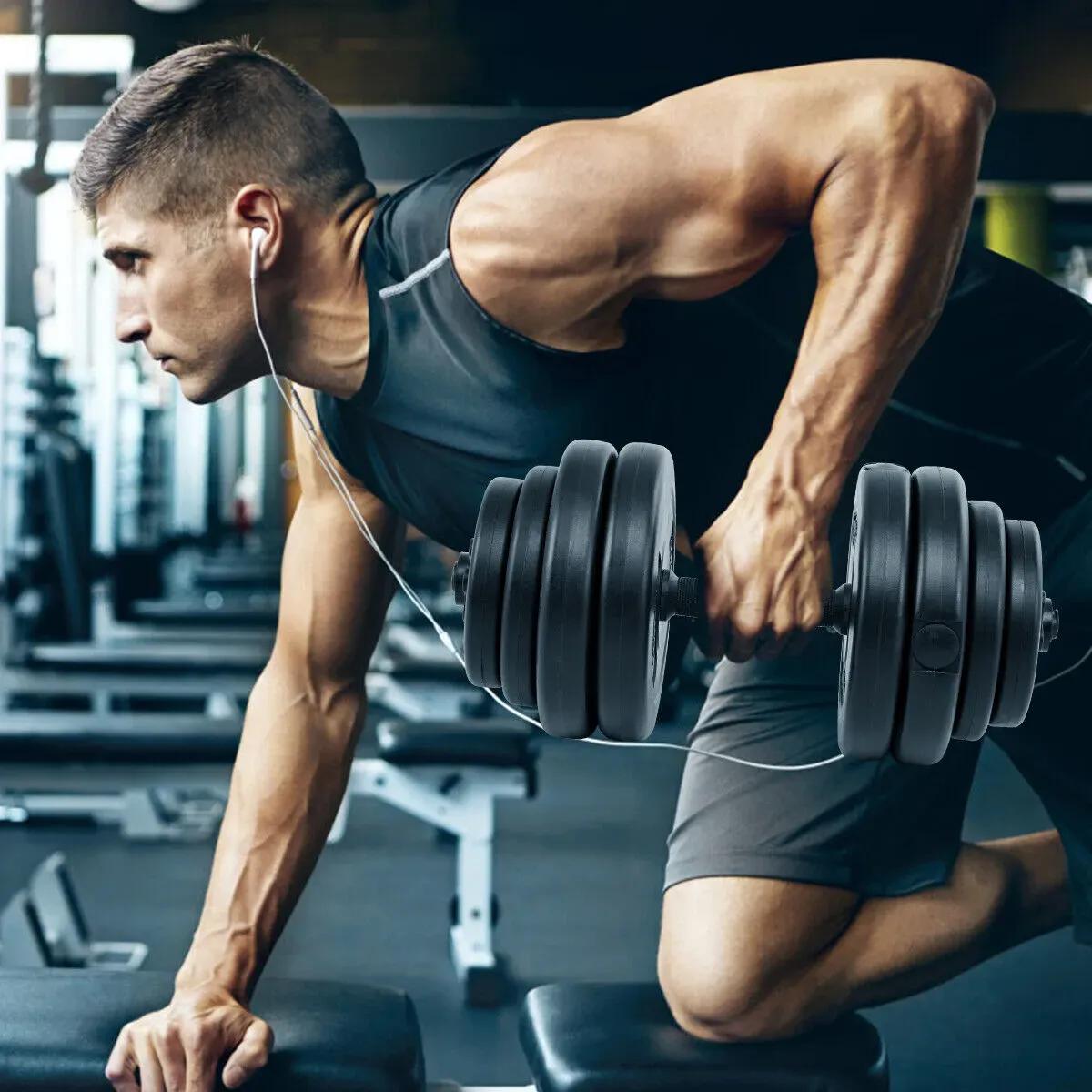
Nail Your Form: Get More from Chest Workouts at Home No Equipment
The Unbreakable Plank: Foundation of Your Push-Up
Alright, let's talk turkey about form. You can do a hundred push-ups with terrible form and get maybe ten percent of the benefit, plus a sore back or shoulders. Or, you can do ten perfect ones and actually build muscle and strength. The foundation of any effective push-up, the cornerstone of your chest workouts at home no equipment, is the plank position.
Imagine a straight line running from your heels all the way up to the crown of your head. Your body should be rigid like a board. No sagging hips, no butts sticking up in the air. Your core needs to be braced hard, like you're about to get punched in the gut. Glutes squeezed. This isn't just about looking pretty; maintaining this tension keeps your spine safe and ensures the force is directed into your chest, shoulders, and triceps, not leaking out through a floppy midsection.
Elbows and Shoulders: Don't Wing It
Next up, pay attention to where your elbows are going. A super common mistake is letting them flare way out to the sides, creating a "T" shape with your body. This puts a ton of unnecessary stress on your shoulder joints and reduces the work your chest has to do. Think about keeping your elbows tucked in slightly, maybe around a 45-degree angle relative to your torso.
As you lower yourself, your chest should be aiming for the floor, not your face. Control the descent. Don't just drop. At the bottom, your chest should be close to the ground (or the elevated surface if you're doing incline push-ups), and at the top, push all the way up until your arms are straight, getting a good squeeze in the chest. Don't shortchange your range of motion.
Common Push-Up Form Errors to Avoid
- Sagging hips or piking your butt up.
- Elbows flaring straight out to the sides.
- Not going low enough (partial reps).
- Failing to lock out the arms at the top.
- Letting your head drop or crane forward.
Tempo and Control: Make Every Rep Count
Speed isn't your friend here, especially when you're focusing on muscle growth during chest workouts at home no equipment. Bouncing off the bottom or rushing through reps uses momentum, not muscle. Focus on a controlled tempo. Try lowering yourself slowly, maybe taking two or three seconds to reach the bottom. Pause briefly if you can, feeling the stretch in your chest.
Then, explode back up. This controlled eccentric (lowering) phase is crucial for muscle damage and subsequent growth. The powerful concentric (pushing) phase builds strength. By focusing on tempo and making each rep deliberate, you increase the time under tension for your chest muscles, which is a key driver of hypertrophy (muscle size increase). Quality over quantity, always.
Putting It Together: Your Simple NoEquipment Chest Routine
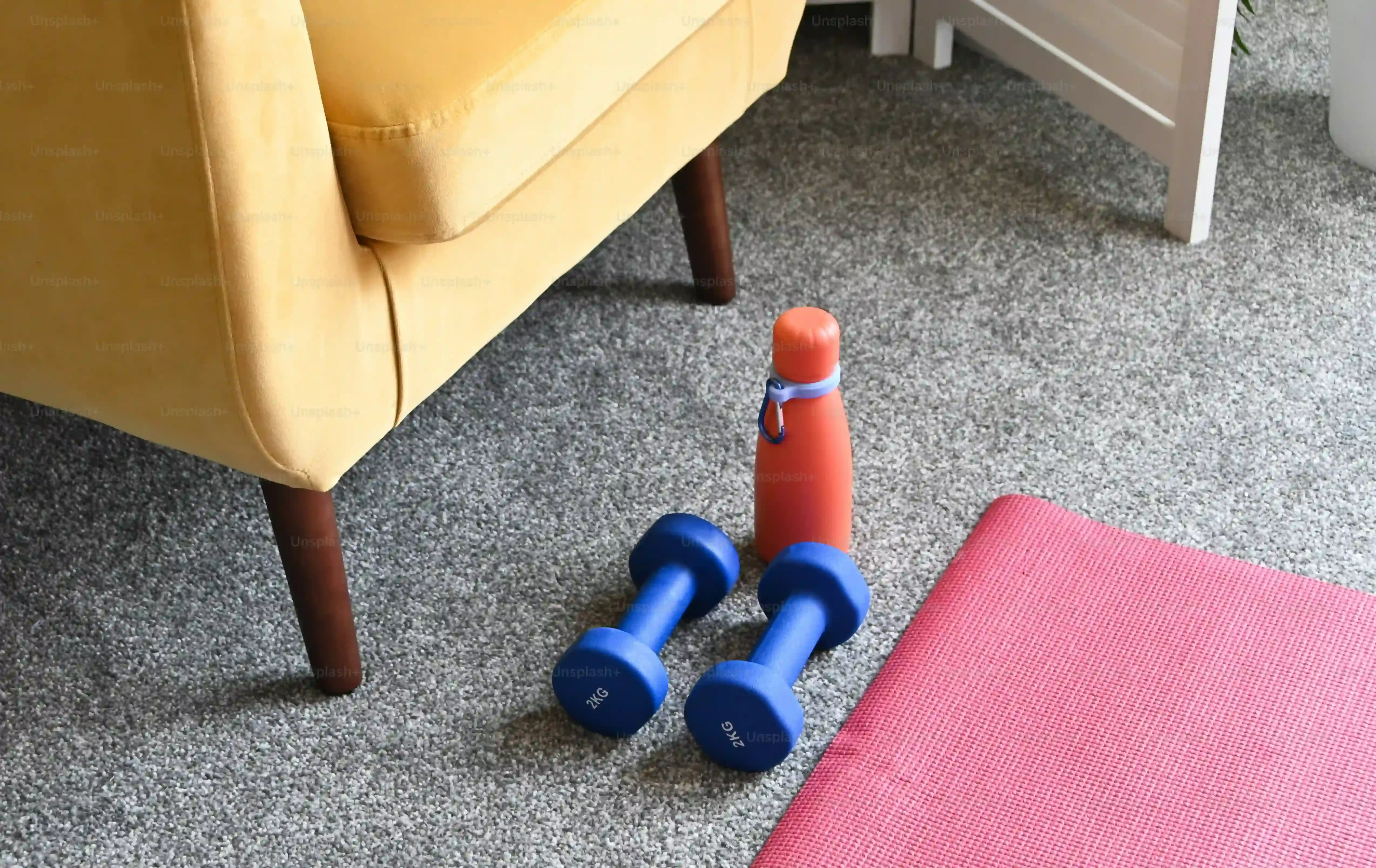
Putting It Together: Your Simple NoEquipment Chest Routine
Putting It Together: Your Simple NoEquipment Chest Routine
so you've got the variations down and you're ready to perfect your form. Now, how do you actually build a routine out of this? It's simpler than you think. A solid no-equipment chest workout doesn't need to be complicated. You want to hit different angles and rep ranges to challenge your muscles effectively. Start with a variation that allows you to get a decent number of reps with good form, like standard or incline push-ups if full push-ups are tough. Then, move to a variation that challenges you in a different way, maybe decline push-ups to target the upper chest, or diamond push-ups for the inner pec and triceps squeeze. The key is consistency and progression. Don't just do random push-ups whenever you feel like it; schedule it, track your reps, and aim to do a little more each week or improve your form.
Your Chest, No Excuses
So there you have it. Building a solid chest doesn't require a trip to the gym or buying expensive gear. Your body and a willingness to put in the work are all you need. We've covered why bodyweight is effective, explored variations that hit your chest from different angles, and emphasized that getting the form right is non-negotiable. Consistency trumps complexity every time. Stop waiting for the perfect setup or the right equipment. Start with what you have, right where you are, and build a stronger chest with effective chest workouts at home no equipment needed.
